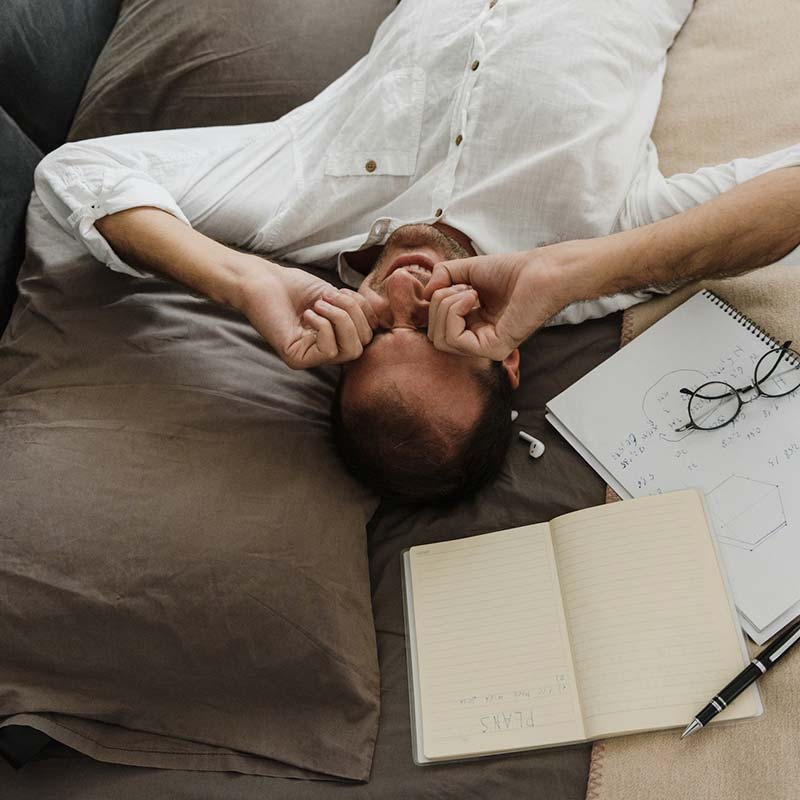What is Dry Eye Syndrome?
Dry Eye Syndrome (DES), also known as Ocular Surface Disease (OSD), is the most common eye disorder, affecting about 20% of the population. It is caused when one or all of the components of the tear film are not in balance. Clogged oil glands along both upper and lower lid margins contribute to 86% of ocular surface disease progression (OSD) and dry eye. Poor lacrimal gland function further reduces the production of our “emergency eye wash tears.” Damage to our goblet cells that reside in the tissue near our beautiful iris can reduce the output of our mucous tears which help to nourish and protect our precious sight. Understanding the complex makeup of our tears is important in devising a proper treatment approach to solving OSD.
What are the Symptoms?
The most common symptoms of Dry Eye Syndrome include:
- Redness
- Irritation
- Scratchiness
- Burning
- Watery eyes
Advanced dry eyes may damage the front surface of the eye and impair your vision. Depending on the severity of your symptoms, we have effective treatment solutions for OSD.

What are the Risk Factors?
Dry eyes can develop for many reasons, including:
- Age (a majority of people over age 65 experience symptoms of dry eyes)
- Gender (women are more likely to develop dry eyes due to hormonal changes caused by pregnancy, the use of contraceptives, and menopause)
- Medications (i.e., antihistamines, decongestants, blood pressure medications, and antidepressants can reduce tear production)
- Medical conditions (i.e., rheumatoid arthritis, diabetes, and thyroid problems are more likely to have symptoms of dry eyes)
- Environmental conditions (i.e., exposure to smoke, wind, and dry climates can increase tear evaporation and failure to blink regularly can also contribute to drying of the eyes)
- Long-term use of contact lenses
- Refractive eye surgeries, such as LASIK, can decrease tear production
What Is OptiLight by Lumenis & How Can It Manage Your Dry Eye?
Dry eye disease is a widespread and common issue for up to 49 million Americans. This chronic condition can have a significant impact on your quality of life, causing a foreign body sensation in your eyes, pain, blurry vision, and dry or watery eyes. Untreated, it can even lead to further eye health complications.
Despite these constant detrimental effects on quality of life, many dry eye sufferers are not aware that they’re suffering from dry eye disease or that real treatments exist. Instead, they just live with the discomfort.
At Enhanced Eye Care, our number one priority when it comes to treating dry eyes is to help you reclaim comfortable and healthy vision. Through our use of modern dry eye solutions like the OptiLight program and cutting-edge diagnostic technology, our team of professionals is equipped with the necessary tools to accurately diagnose and treat your dry eyes. Our suite of diagnostic techniques and tools includes meibography, non-invasive tear breakup time, bulbar and limbal redness evaluation, tear meniscus height, Sodium Fluorescein staining, Lissamine Green staining, and dynamic gland expression.
We’re proud to offer OptiLight by Lumenis to our patients, specially designed for dry eye management.
An Illuminating Dry Eye Solution: OptiLight by Lumenis
OptiLight is the first and only IPL FDA-approved treatment for dry eye disease caused by MGD (meibomian gland dysfunction). The gentle, noninvasive procedure is safe, comfortable, and supported by more than 20 clinical studies. Get relief from your dry eyes with the help of OptiLight.
What Is OptiLight by Lumenis?
OptiLight by Lumenis is a light-based, non-invasive treatment done in the area below the eyes to manage dry eye. The first and only IPL FDA-approved for dry eye management.
What to Expect
OptiLight typically involves a series of 4 treatments set 2–4 weeks apart. Each session takes about 10–15 minutes. Once the session is over, you can immediately get back to your day. No waiting time.
During your appointment, an eye care professional will apply coupling gel to the treatment area. Then, they’ll cover your eyes with shields.
Next, light pulses are focused on the skin below your eyes. You might feel warmth or heat on your skin, but otherwise, most patients experience minimal sensation.
Finally, your eye doctor will remove the eye shields and remove the coupling gel.
How Does It Work?
OptiLight uses precise pulses of light to reduce the inflammation that is typically associated with dry eye disease, improve tear break-up time, and increase meibomian gland functionality.
This application can significantly relieve dry eye indicators and has a multi-factorial effect, including:
- Increasing tear break-up time
- Reducing the amount of Demodex mites and bacteria living around your eyes
- Eliminating blood vessels that contribute to inflammation
- Improving meibomian gland functionality
Other Ways Dry Eye is Treated?
We start with a full eye examination and carefully examine the ocular surface with specific diagnostic equipment to determine which areas of the tear film are in distress. Your optometrist will then formulate an initial treatment plan which may include:
- Lid margin hygiene to encourage better oil gland production: OCuSOFT Original, OCuSOFT Hypochlorous spray, Zocushield gel
- Discussion of supplements that may be beneficial
- Possible prescription eye drop medication
- The TearCare® System is intended for the application of localized heat therapy in adult patients with evaporative dry eye disease due to meibomian gland dysfunction (MGD)
- Intense Pulse Light Therapy to reduce redness and vessel inflammation around the eyes and Demodex eradication
- Amniotic membrane technology
- Scleral lenses
- Autologous serum eye drops
- Or a combination of some of these strategies

